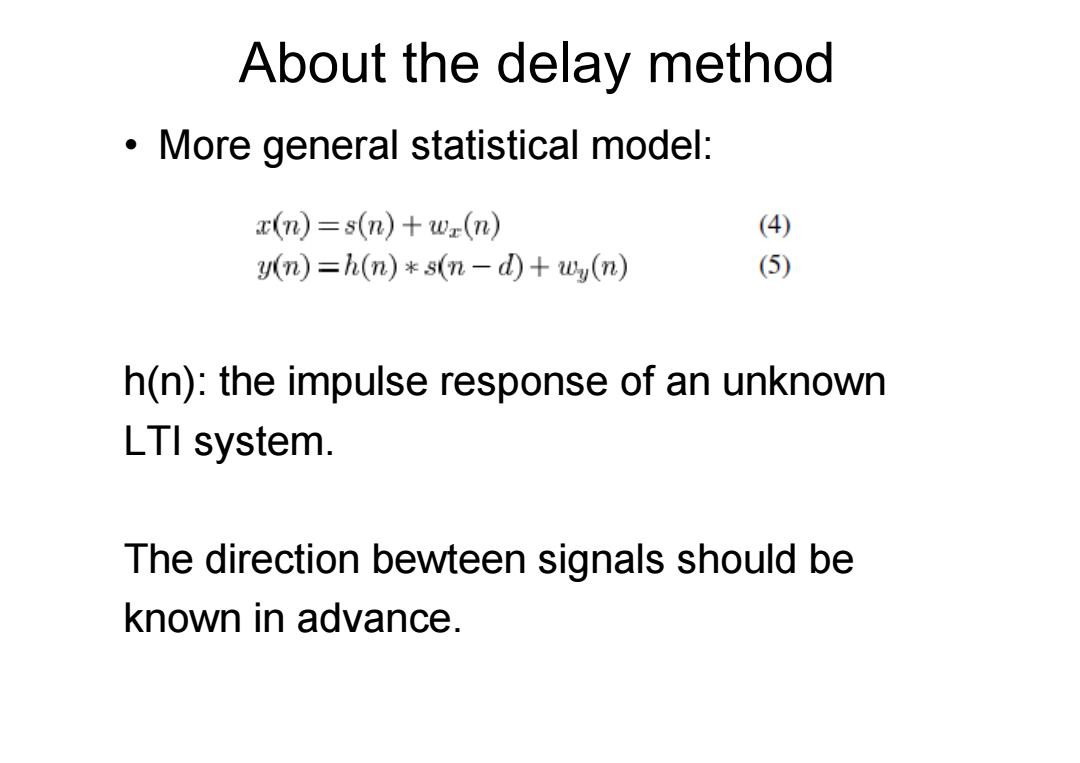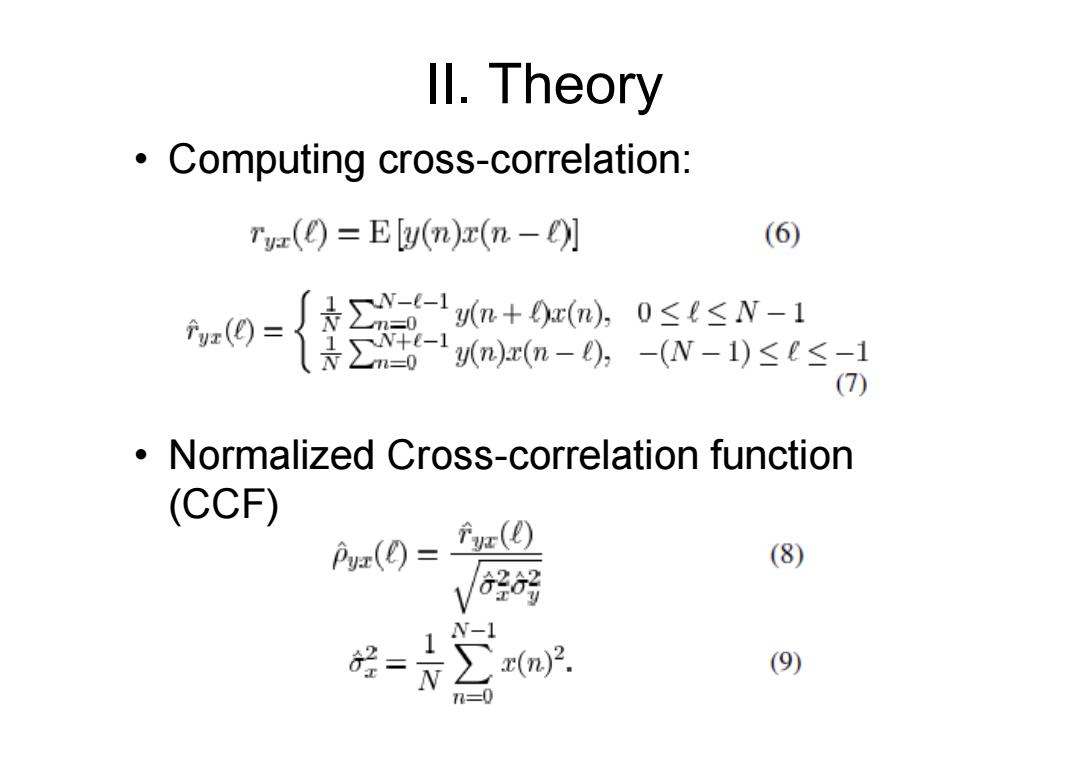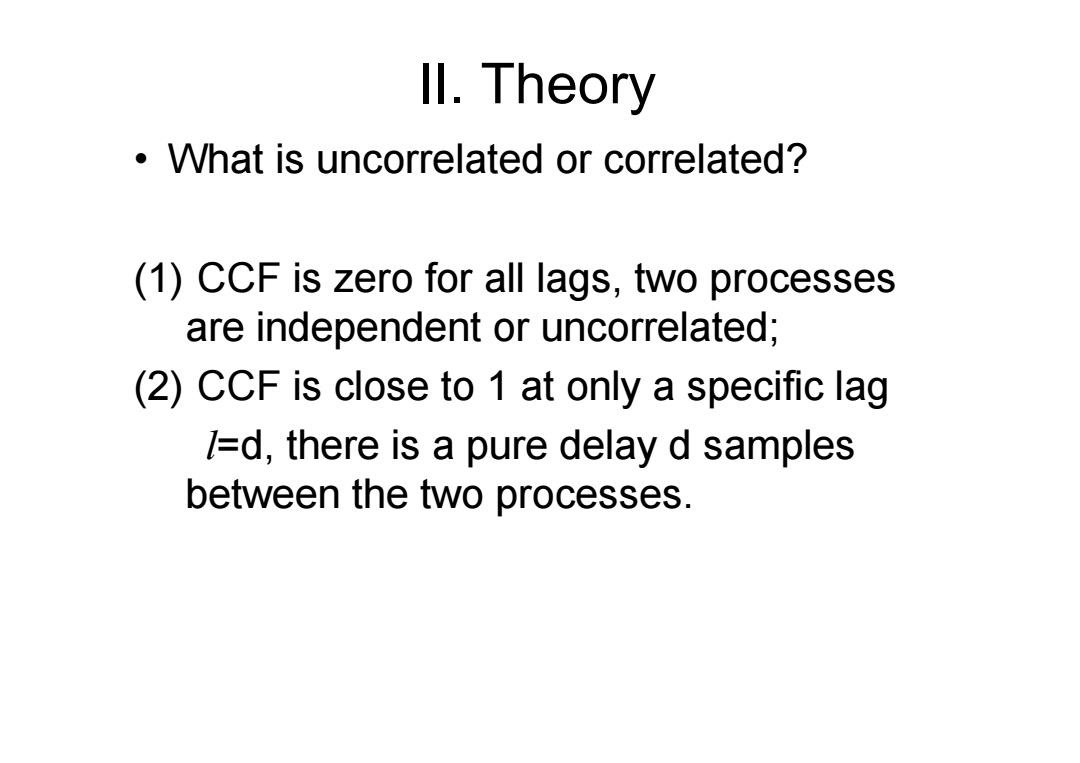
About the delay method More general statistical model: x(n)=s(n)+w(n) (4) y(n)=h(n)*s(n-d)+wy(n) (5) h(n):the impulse response of an unknown LTI system. The direction bewteen signals should be known in advance
About the delay method • More general statistical model: h(n): the impulse response of an unknown LTI system. The direction bewteen signals should be known in advance

Cross-correlation Cross-correlation analysis often fails in determining the causality. The problem usually occurs when a signal has a strong predictional component and is correlated with itself over long lag time. A simple solution to this problem is to apply whiting filters to each of the stochastic signals prior to corss-correlation analysis
Cross-correlation • Cross-correlation analysis often fails in determining the causality. • The problem usually occurs when a signal has a strong predictional component and is correlated with itself over long lag time. • A simple solution to this problem is to apply whiting filters to each of the stochastic signals prior to corss-correlation analysis

ll.Theory Computing cross-correlation: Tu-(e)=Ely(n)x(n.-e)] (6) z0=n+zm.0≤≤N= 六m-r(n-O,-(w-1)≤e≤-1 (7) Normalized Cross-correlation function (CCF) pa()= fu() (8) V经 = x(n)2. (9) n=0
II. Theory • Computing cross-correlation: • Normalized Cross-correlation function (CCF)

ll.Theory What is uncorrelated or correlated? (1)CCF is zero for all lags,two processes are independent or uncorrelated; (2)CCF is close to 1 at only a specific lag /=d,there is a pure delay d samples between the two processes
• What is uncorrelated or correlated? (1) CCF is zero for all lags, two processes are independent or uncorrelated; (2) CCF is close to 1 at only a specific lag l=d, there is a pure delay d samples between the two processes. II. Theory